[This post contains affiliate links, which means that I may earn a small commission at no extra cost to you if you follow one of my links and make a purchase.]
Understanding color symbolism is an important part of reading tarot cards. The good news is you probably know more about color symbolism than you think!
In this post, I talk about the meaning of certain colors in tarot and show you how paying attention to color in tarot can enrich your understanding of the cards.
[This post contains affiliate links, which means that I may earn a small commission at no extra cost to you if you follow one of my links and make a purchase.]
Color symbolism in the Rider Waite Smith tarot deck
There are so many different tarot decks out there these days. So it bears mentioning that when we talk about the meaning of colors in tarot, we’re usually referring to the original Rider Waite Smith (RWS) tarot deck.
Why? Because The RWS tarot deck is chock full of symbolism and imagery that add multiple layers of meaning to each card. And that includes color symbolism. The RWS takes into account the color symbolism prevalent in Western culture and is very deliberate in its choice of colors in a way that some other, more modern decks are not necessarily.
So when we talk about studying the meaning of each tarot card and the imagery and symbolism in the tarot, we are almost always referring to the RWS deck.
(It’s important to note that the RWS tarot is extremely Western, or Eurocentric. While Western culture and its symbolism certainly dominates much of society and culture to this day, it’s important to point out that it’s in no way better or more universal or correct than Eastern, African, or any other cultural narratives and systems that may differ.)
If you are ever working with a tarot deck other than the original RWS deck, note that the color symbolism of that tarot deck may be parallel to cultural color archetypes, but it may not be. The color choices in different decks may also be purely aesthetic, arbitrary, or following some other code or interpretive system.
Essential color meanings in tarot cards
While this post isn’t exhaustive about all color symbolism and meanings in the tarot, it covers the essential colors found in tarot cards. Knowing the basic meaning of these tarot colors will add rich layers to your tarot readings.
Watch the video or read on below.
The color symbolism of RED
Many tarot cards have red in them, including some of the most powerful figures in the tarot. What do tarot figures like the Magician, the Emperor, and Justice have in common? They all wear bright red robes.
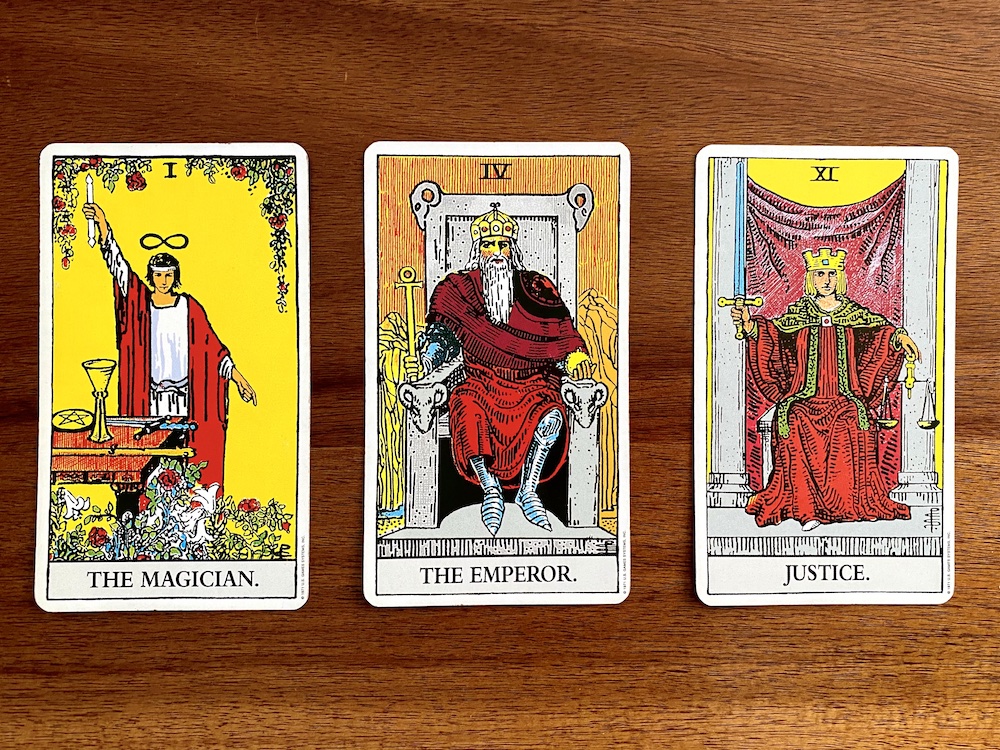
Why are they wearing red? Because red is a power color. It conveys power, passion, strength, ability, and leadership.
Think about it: Red is a power color for many people in real life too. If you have an important date, presentation, or event coming up and you really want to make a bold, confident statement, you might opt for a red dress, red blazer, or red lipstick. The power behind the color red is ingrained in our collective unconscious. And since the tarot reflects the universal human experience (as seen through a Western lens, I should say), that’s exactly why the deck incorporates red in the same way.
Want another example of how red represents power and strength in the tarot? Take a look at the 8 of Cups.
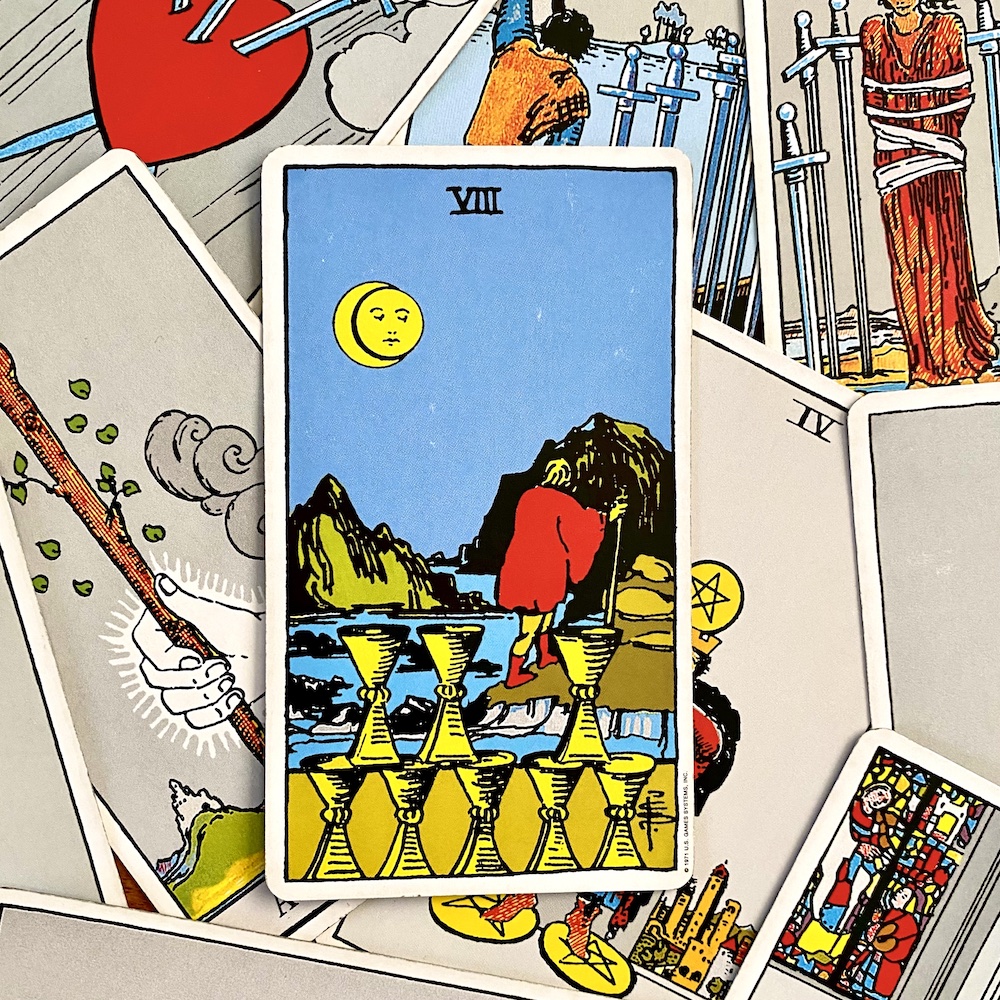
This card depicts a figure not only in a red cloak, but in red boots as well! And the 8 of Cups is a really intense card that represents leaving behind relationships and situations that are no longer serving you. It takes a lot of guts and power to do that, which is why the figure is donned in red.
If the decision and journey in this card were made on a whim or in a leisurely way, the figure would probably be wearing some other color.
The color symbolism of YELLOW
When you think about what we already know about the color yellow and what feelings we instinctively get with that color, you’ll realize that learning the meaning of colors in tarot isn’t as difficult or cryptic as you may have thought.
The symbolic meaning of the color yellow comes from the sun, so let’s start with the Sun card in the tarot deck.
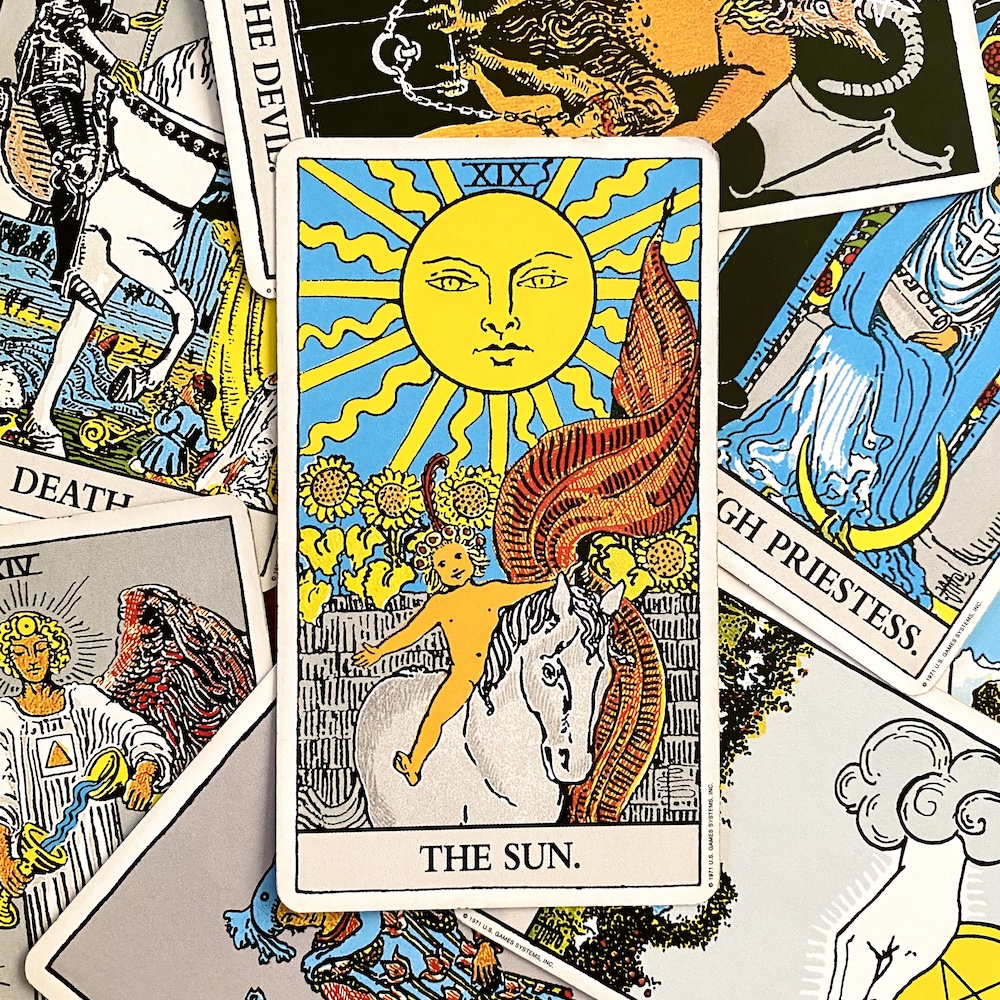
The sun gives us warmth and light, both of which we need to thrive and feel secure. Yellow is positive, optimistic, bright, and happy.
(Related: Free Cheat Sheet on Tarot and Astrology)
Take the 4 of Wands, a super yellow card, as an example.
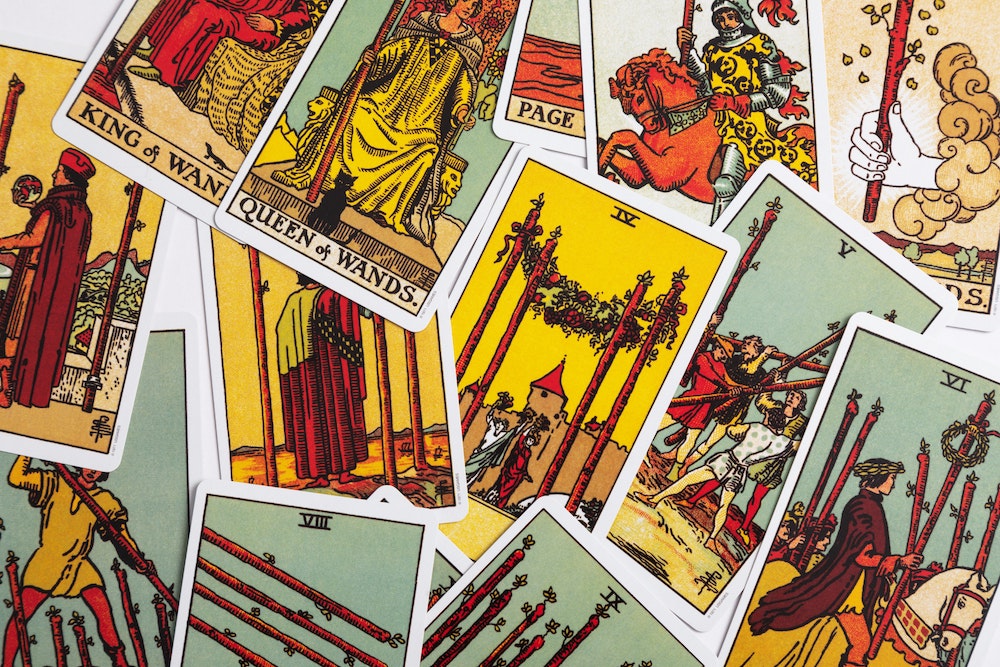
This card depicts a joyful celebration or union – perhaps a wedding or homecoming. So it makes sense that the background of this card would be bright yellow since these events are so bright and happy and optimistic about the future.
What about when a figure in the tarot wears yellow? Let’s take a look at the Queen of Wands, the social butterfly of the tarot.
The Queen of Wands is positive, cheerful, and outgoing. She lights up every room she walks into. So of course she’s wearing yellow! We would not be able to glean that message from this card as intuitively as we do if the Queen of Wands were wearing, say, purple or black.
The color symbolism of BLACK
With yellow, we talked about light. Now let’s talk about darkness – black.
What do we think of when we think about the color black? Darkness, death, and fear, right? Black represents negativity, loss, and grief.
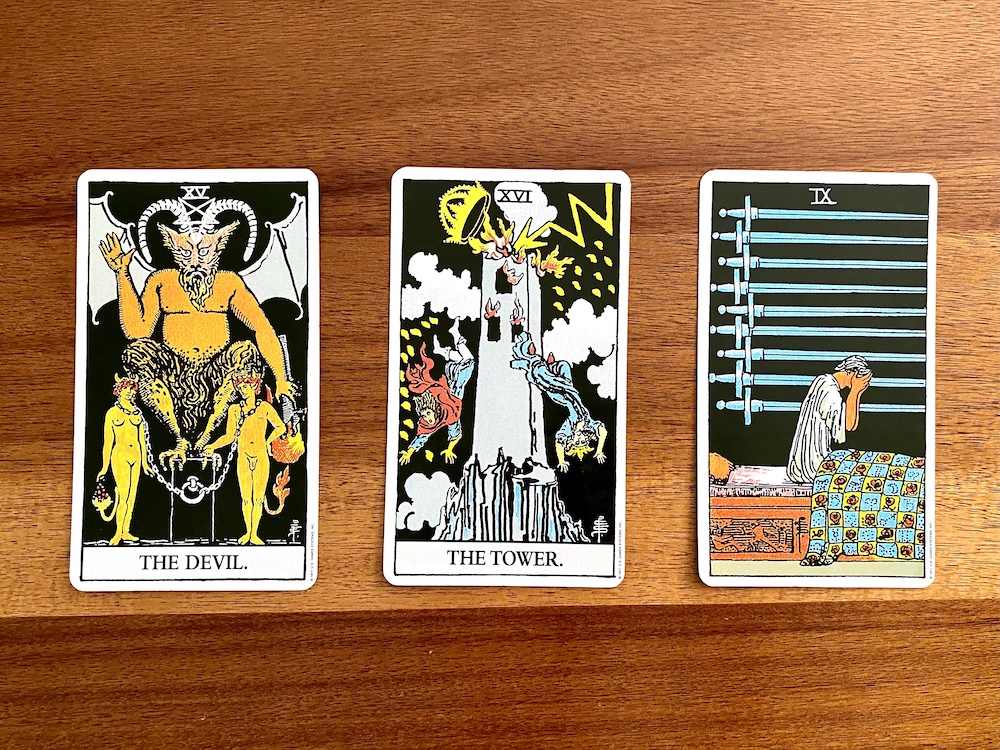
Again, Pamela Colman Smith, the artist of the original RWS, chose these colors for a reason. Everything we see in the imagery of the cards is there to help us interpret the intuitive messages we are getting through the cards.
Tarot cards like the Devil, the Tower, and the Nine of Swords, just to name a few, carry a lot of negative energy with them (things like limitations, addictions, disaster, loss, and fear). That’s exactly why they contain so much black. Even if you didn’t know how to perfectly articulate the meaning of those specific cards, you’d get a definite negative feeling from the black color. That’s deliberate.
(Related: The Difference Between Major and Minor Arcana Cards in Tarot)
Want another example of how black represents loss or grief? Take a look at the 5 of Cups.
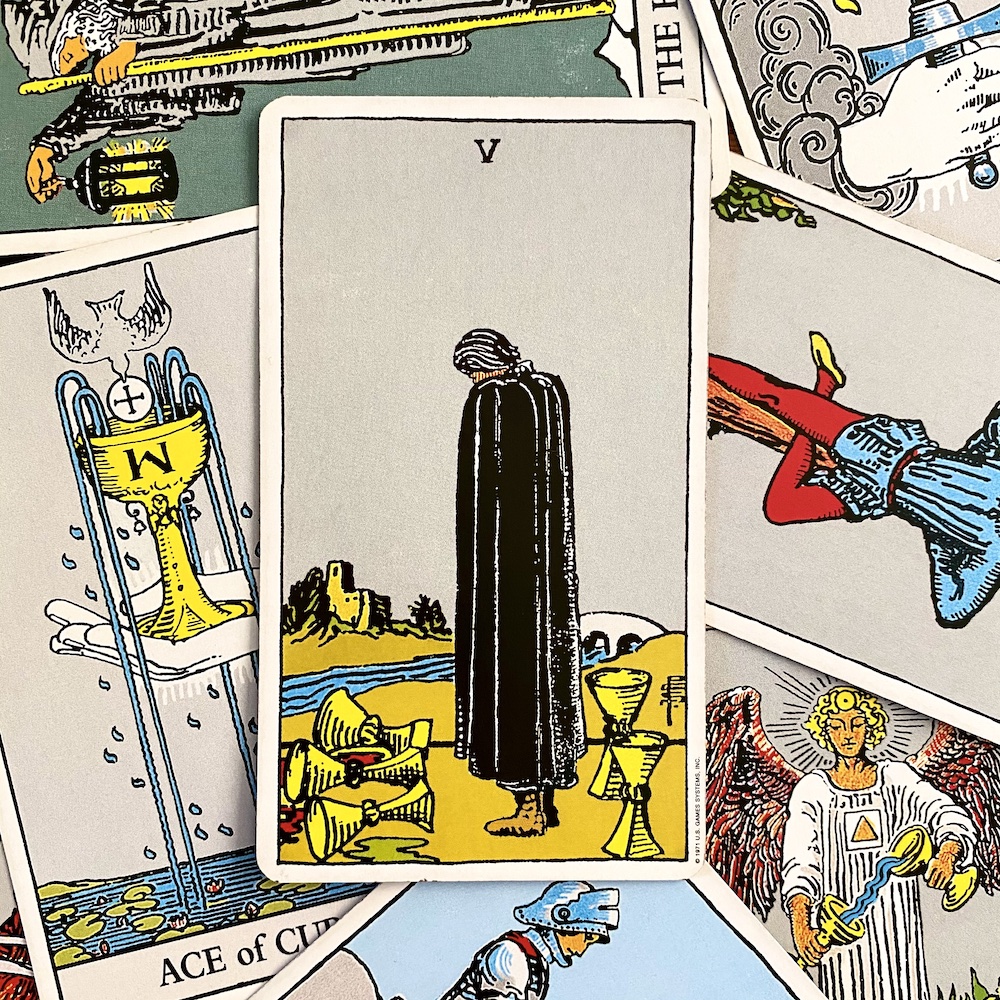
The figure in the 5 of Cups is almost completely covered in a heavy, dark black cloak. The dramatic black figure in the center of an otherwise bright card is really telling. This person is weighed down by their melancholy, regret, and grief. And this card suggests that our negative and sorrowful mindset may be causing us to neglect other “cups” in our lives.
(Related: How to Read Reversals in Tarot)
The color symbolism of WHITE
By now, you can probably see how the meaning of these colors weren’t arbitrarily decided on by Pamela Colman Smith or Arthur Waite when they were creating the RWS deck. These color meanings already existed in our collective consciousness and cultural meanings in our society.
The color white is illustrative of how we all kind of already know what white symbolizes, even if we haven’t thought about it before. When do people wear white? Baptisms, first communions, and weddings, to name a few. White is a color of purity, innocence, cleansing, and rebirth.
Let’s see how white plays out in the tarot deck.
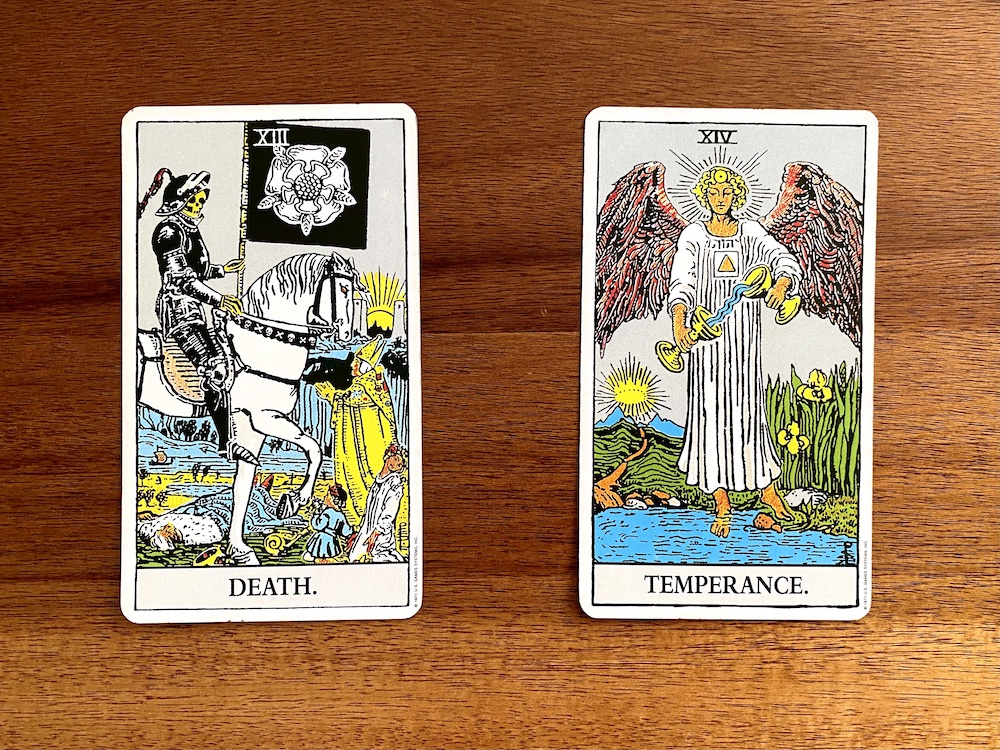
Death marches in on a white horse in the Death card. This shows that death is natural and pure and necessary for rebirth.
What about Temperance, who wears a white robe? Temperance is about maintaining purity through balance and knowing that you have everything you need within you to manifest your desires. There’s a purity and innocence that comes with that understanding since it requires breaking down our walls, releasing limiting beliefs and complexes, and really getting back to Source, Spirit, or your true self. Temperance’s white robe helps us get to that meaning!
If she were wearing, say, red or black, this card would have a wholly different vibe and thus a different meaning.
I hope this introduction to color symbolism in tarot helps you feel even more connected to the imagery in your tarot cards. There are so many layers to tarot that it’s really a never-ending learning process. And that’s what makes working with tarot a lifelong journey of discovery.



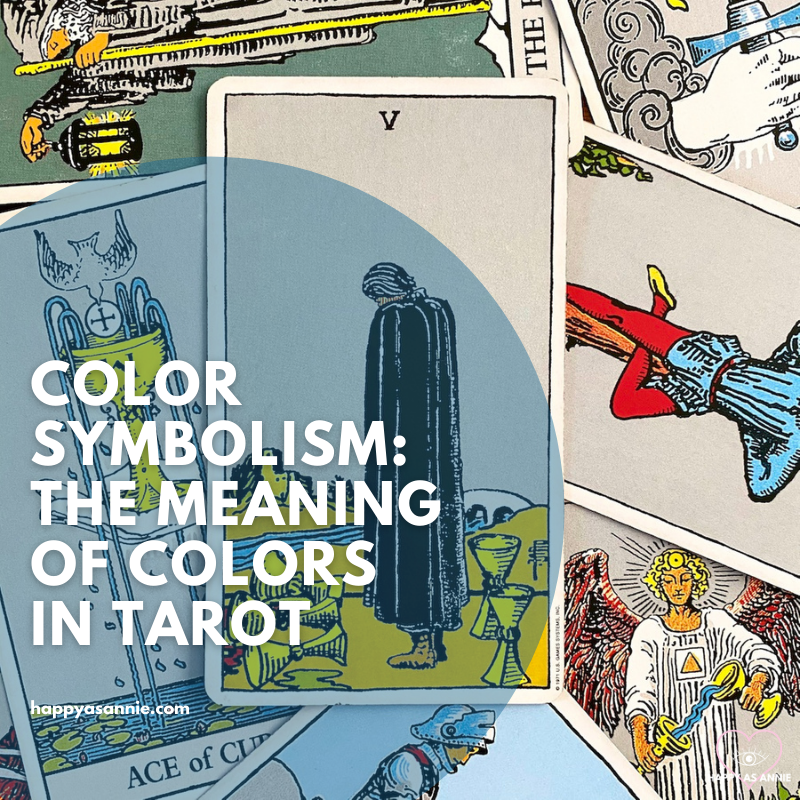
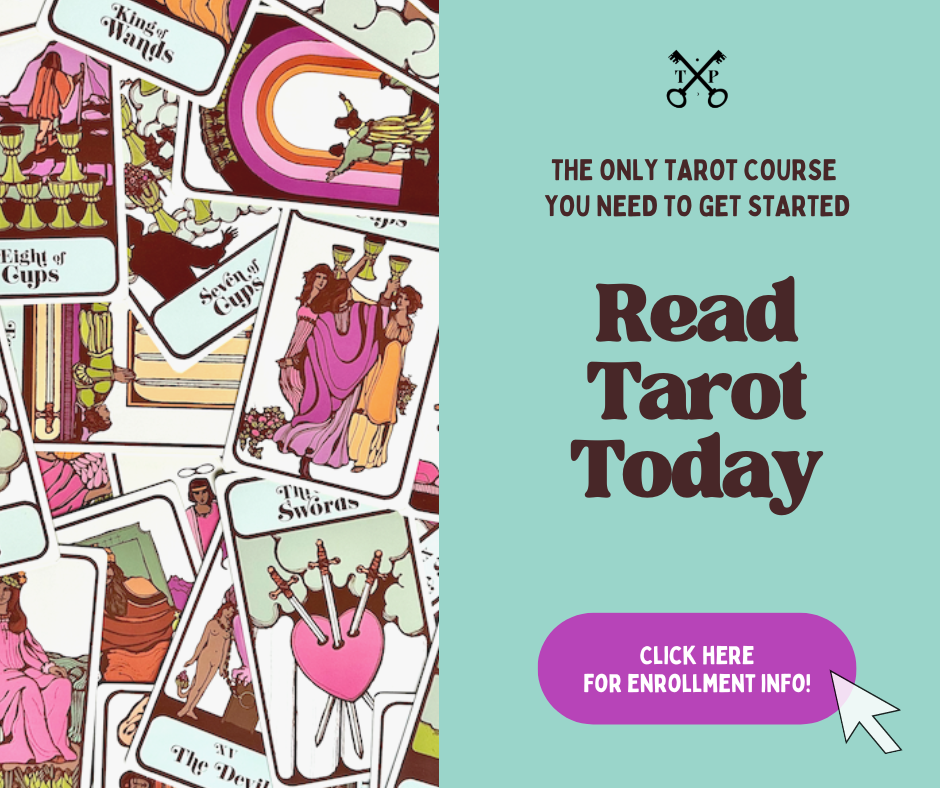
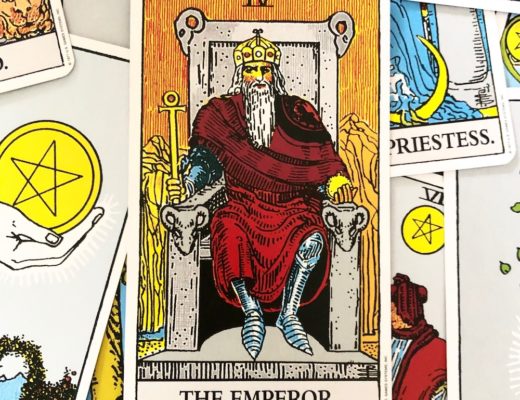
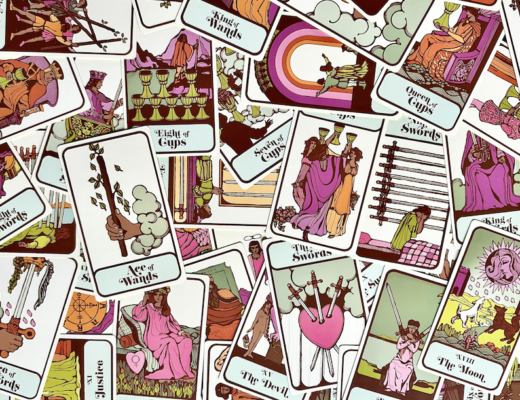
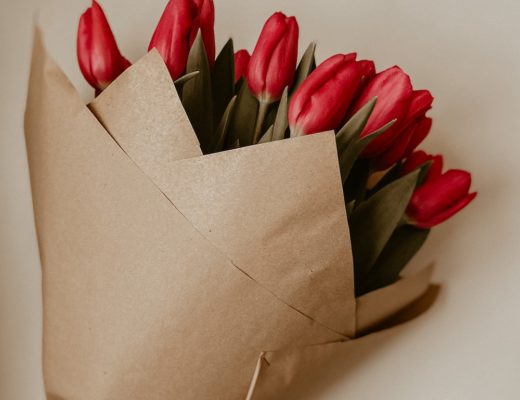
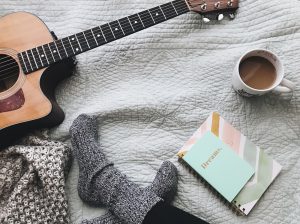

13 Comments
This is an intriguing post. I love to paint and draw in my spare time and when I choose which colors to use, it’s usually based on color psychology, or what color means or represents. And seeing that same philosophy being used in the appearance of a deck of tarot cards is really informative. Great post.
Color psychology is a great way to put it! Thanks for reading, Kaitlyn!
This was an interesting read! I have a deck of tarot cards from a few years ago and never thought about the colors all that much, but I’ll have to look at them again!
Do it, Laura! Then let me know how you feel about them now. 🙂
[…] (Related: Color Symbolism: The Meaning of Colors in Tarot) […]
[…] which refer to what each card means. Let me give you an example. A few days ago, I drew the 5 of Cups for the first position. Now the 5 of Cups is not typically a “positive” card. It is a […]
[…] (Related: Color Symbolism: The Meaning of Color in Tarot) […]
I got a Zenith Witchcraft set as a gift, & I’m not interested in casting spells & stuff., So I just kept the Tarot deck (which is all I wanted to begin with, But… So it says in the description that it comes with 78 Black Tarot cards… The kit was satanic, So are the cards linked in that way because of that? & What dies that mean “black”???
Is this a bad deck to LEARN on???
Hi Michael! Hmm, it sounds like the black/Satanic theme is just an artistic or marketing choice. I don’t personally believe any tarot cards are “dark” or cursed or negative spiritually or anything like that if that’s what you mean. As long as the imagery is interesting and detailed and based on the original Rider Waite Smith imagery (which is the easiest deck to learn on) and you don’t mind if all the cards are monochrome in color, try it! Let me know how it goes.
You have explained the colour representation so well with examples and logic. Thanks a ton. I am in the process of learning tarot. This really helped. ❤️
I’m so glad it was helpful!
Lovely take on the tarot colours
Thanks for reading, Daphne!